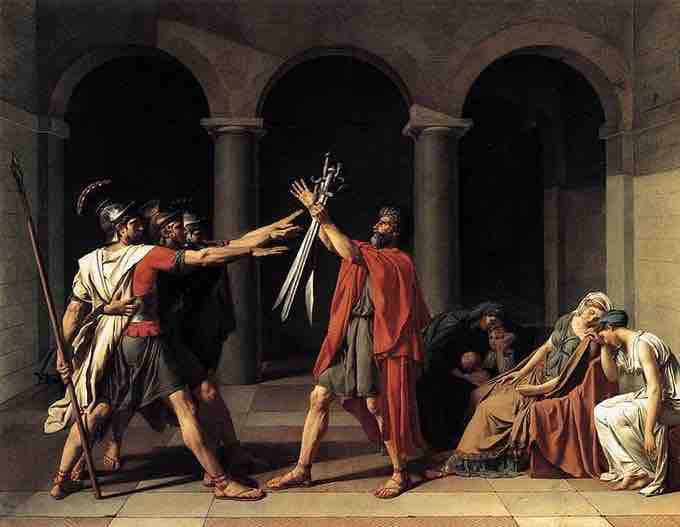The line is an essential element of art, defined as a mark that connects the space between two points, taking any form along the way. Lines are used most often to define shape in two-dimensional works and could be called the most ancient, as well as the most universal, forms of mark making.
There are many different types of lines, all characterized by their lengths being greater than their width, as well as by the paths that they take. Depending on how they are used, lines help to determine the motion, direction, and energy of a work of art. The quality of a line refers to the character that is presented by a line in order to animate a surface to varying degrees.
Actual lines are lines that are physically present, existing as solid connections between one or more points, while implied lines refer to the path that the viewer's eye takes as it follows shape, color, and form within an art work. Implied lines give works of art a sense of motion and keep the viewer engaged in a composition. We can see numerous implied lines in Jacques-Louis David's Oath of the Horatii, connecting the figures and actions of the piece by leading the eye of the viewer through the unfolding drama.

Jacques-Louis David, Oath of the Horatii, 1784
Many implied lines connect the figures and action of the piece by leading the eye of the viewer through the unfolding drama.
Straight or classic lines add stability and structure to a composition and can be vertical, horizontal, or diagonal on the surface of the work. Expressive lines refer to curved marks that increase the sense of dynamism of a work of art. These types of lines often follow an undetermined path of sinuous curves. The outline or contour lines create a border or path around the edge of a shape, thereby outlining and defining it. Cross contour lines delineate differences in the features of a surface and can give the illusion of three dimensions or a sense of form or shading.
Hatch lines are a series of short lines repeated in intervals, typically in a single direction, and are used to add shading and texture to surfaces. Cross-hatch lines provide additional texture and tone to the image surface and can be oriented in any direction. Layers of cross-hatching can add rich texture and volume to image surfaces.